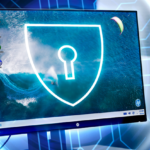Computer-held testing has become an integral part of the education system, providing educators with a convenient and efficient way to assess students’ knowledge and skills. As we discussed in our last blog, 3 Common Device Issues That Disrupt Standardized Testing, schools often encounter disruptive device issues on testing days.
Archives
Integrating technology into the K-12 education system has become essential in today’s rapidly evolving world. EdTech (Educational Technology) solutions offer numerous benefits, including personalized learning experiences, improved student engagement, and streamlined administrative processes. However, many schools face budget constraints that hinder their ability to invest in the necessary hardware and software. That’s where grants come in. Securing grants can provide the financial aid needed to bring EdTech into classrooms, empowering students and teachers alike. This comprehensive guide will explore the top EdTech grants available to K-12 schools in 2024.
As we enter 2024, several key trends and challenges are likely to shape the landscape of K-12 EdTech. From device lifecycle management to program sustainability, there are several challenges and considerations educators and administrators may need to address. In this article, we’ll delve into the key trends and challenges 2024 has in store for k-12 education technology.
Computer-held standardized testing has become integral to K-12 education in today’s digital age. Nevertheless, issues are bound to arise when technology is involved. Even minor technical disruptions can cause a great deal of stress for both students and educators. In this article, we will discuss the technical problems your students may encounter on test day so you’re prepared to act when issues arise.
In the fast-paced world of K-12 education, having a reliable printer is essential. From printing worksheets and assignments to creating colorful visuals and educational materials, a high-quality printer can greatly enhance the learning experience for both teachers and students. When it comes to choosing a printer for K-12 schools, HP is a brand that stands out for its reliability, performance, and innovative features. In this comprehensive guide, we will explore the best HP printers for K-12 schools, taking into consideration key features such as printing speed, cost efficiency, print quality, connectivity options, and security features.
Technology has revolutionized how we live, work, and learn in today’s rapidly evolving world. Education technology has the power to enhance collaboration, improve engagement, and provide personalized learning experiences to students like never before. Unfortunately, financial limitations often hinder schools from fully embracing edtech in the classroom. Microsoft’s “Shape the Future” program is a commendable initiative to empower education by providing access to affordable technology solutions for K-12 communities.
Esports are a hot topic right now, and for good reason. Research suggests that the value of the global esports market was valued at $970 million in revenue in 2020, with projections that this value will more than double by 2025 and reach a total market value of $2.89 billion.
Clearly there’s a growing appetite for esports in mainstream circles. Competitive games like League of Legends or StarCraft 2 pull in millions of viewers during big events, and the popularity of these activities continues to increase. The International Esports Federation (IESF) has 123 member federations across the globe, and the Olympic Council of Asia (OCA) recently approved esports to be an official event in the 2022 Asian Games.
Budget maximization is a necessity for every school district. Most K-12 districts deal with some level of complication around purchasing new technology—whether they don’t have the budget for it or are simply unaware of the technology and financing options available to them. The districts that invest in new technology in a proactive and competitive manner often cover the costs strategically with private or federal financing options.
Standardization is a common strategy in modern K-12 environments—from common study programs to age-based grading to uniform testing policies. But it’s no secret that many students struggle to learn in these standardized learning environments, and a growing body of research suggests that the one-size-fits-all approach of modern education holds some students back. Through increased virtual instruction and a growing number […]
With an enormous increase in phishing scams, malware attacks, ransomware schemes, and serious data breaches, the past two years have demonstrated that a strong cybersecurity system is essential for K-12 schools just as much as it is for corporations. The lack of adequate protection can be extremely disruptive and costly: from completely shutting down school operations to exposing students’ personal records, to costing millions of taxpayer dollars to pay ransoms.










